The Isle of Wight is an important location in the history of UK rocketry. It’s widely known that Black Knight and Black Arrow rockets were tested at High Down, right next to the Needles on the western tip of the island prior to being shipped to Woomera Range in South Australia for launch. It’s hard to miss the concrete test stands that still sit on the south shore of the Needles New Battery. But the island also has other connections.
My trip started at Lymington on the mainland, where I took a 40 minute ferry journey to Yarmouth (not to be confused with Great Yarmouth in Norfolk. As far as I’m aware Gt Yarmouth has no connection to UK rockets).
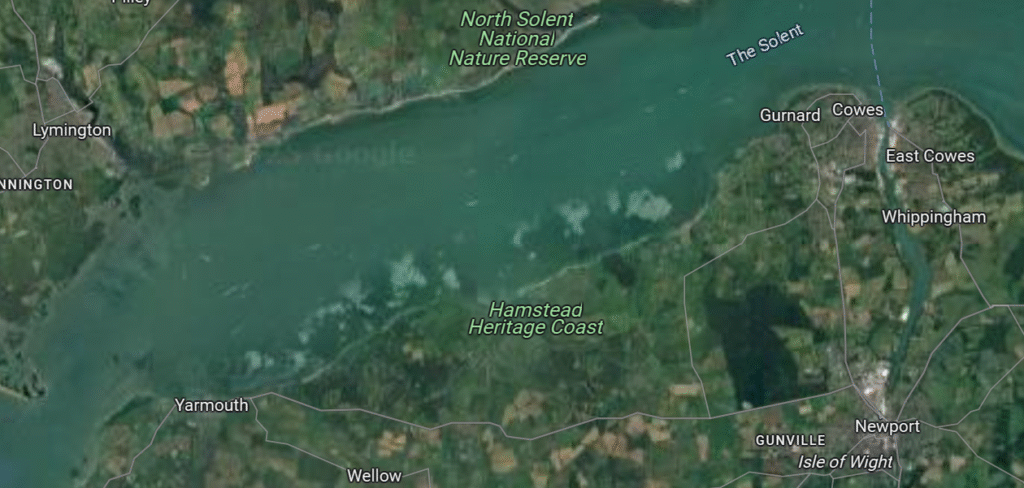
A 30 minute car journey takes you to Newport, which sits on the River Medina, south of Cowes. I stopped here overnight.
The following day I headed by foot to Cowes, then across the estuary on the foot ferry to East Cowes, the site of the Saunders Roe factory, known as Columbine Shed.
Saunders-Roe Ltd, also known as Saro, were a marine and aero engineering company, formed in 1929 by a merger between Alliot Verdan Roe (“Avro”, builders of the Lancaster bomber any many others) and SE Saunders, the boat builder. Saro built boats, flying boats including the SR.A/1, a prototype jet powered flying boat, as well as helicopters. The first practical hovercraft was built and tested from this building in East Cowes in 1959.
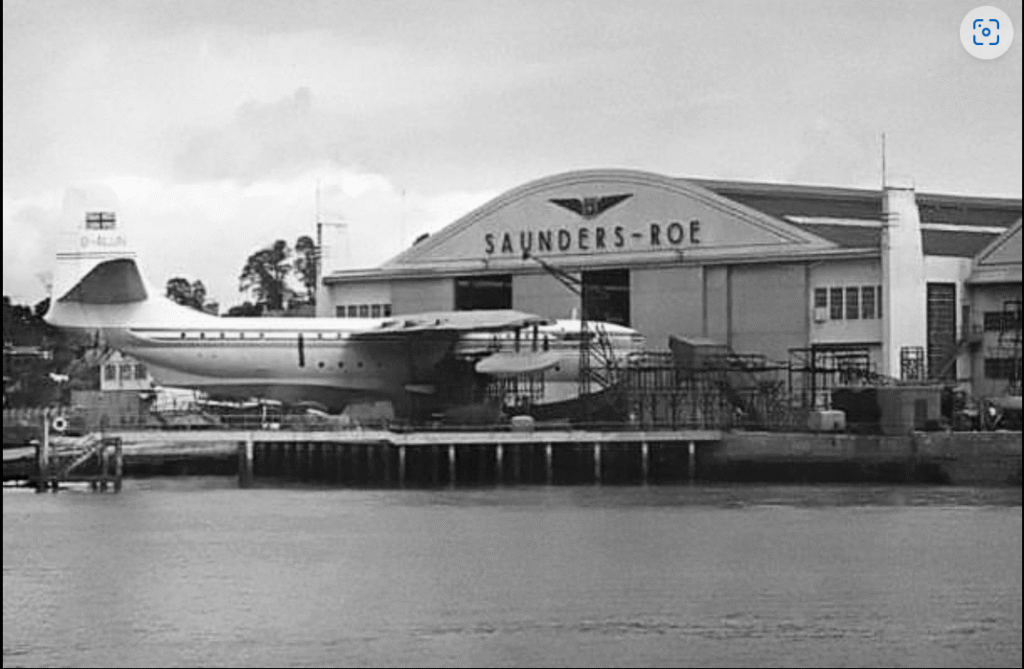
All this innovation makes Columbine Shed an important heritage site for the UK. But there was something else built here, and you can probably guess what that was.
Saro built, in secret, the Black Knight, Black Arrow and second stage of the Black Prince rockets on behalf of the Royal Aircraft Establishment. RAE developed these rockets at the same time as the IRBM (Intermediate Range Ballistic Missile) Blue Streak, which gives this website its name. Blue Streak was not built by Saro but by de Havilland Propellers, primarily at their factory in Walkden. There is some evidence that the engines for Blue Streak, Rocketdyne RZ.2 developed by Rolls-Royce, were tested at High Down.
Columbine Shed still stands today, easily visible from the foot ferry as it crosses from Cowes to East Cowes.

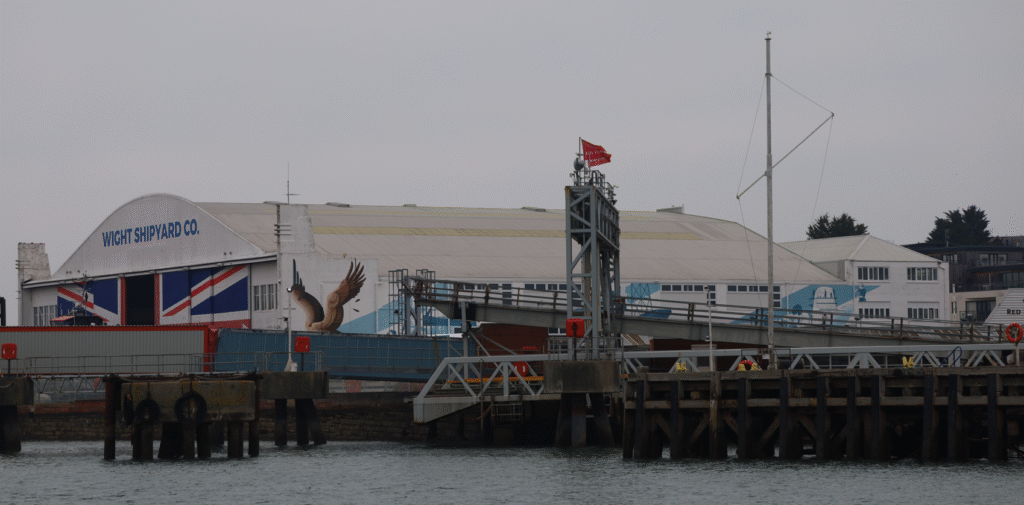
Now known as Wight Shipyard, the lower photo in particular shows that, enormous union flag doors aside, little has changed externally on the building since the 1950s. The various paraphernalia around the shipyard made it increasingly difficult to get good photos the closer you get.
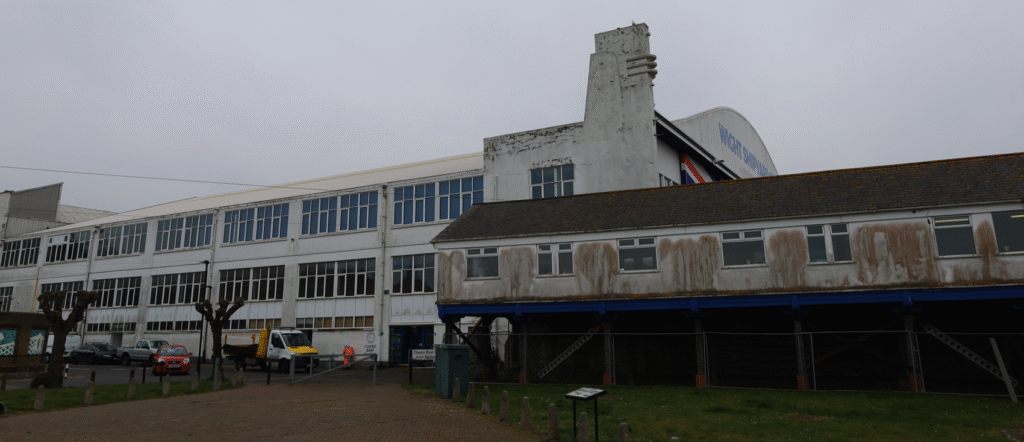
At the north side of Columbine shed there is a display board, which tells the story of the aircraft and hovercraft that were built there. There is no mention of the rockets manufactured here. I wondered if perhaps Black Knight and Black Arrow were still classified under the official secrets act when this board was originally installed, but research suggests that strangely enough the rockets were never considered Top Secret, so I assume the information board is simply concentrating more on the maritime aspect of the building. It is immediately outside the Classic Boat Museum after all! I would ask the East Cowes Group of the Isle of Wight Society but their website hasn’t been updated since 2020.
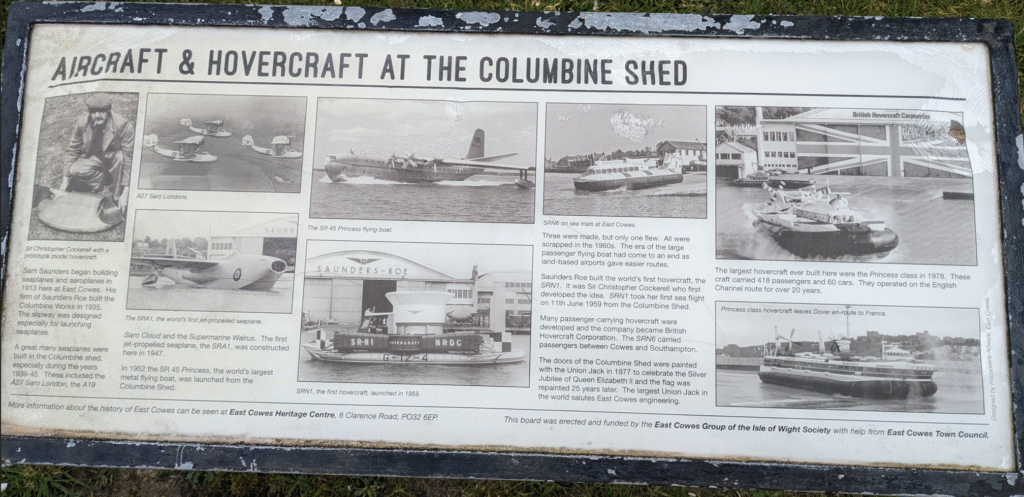
Although the display board fails to mention the rockets built at Columbine Shed, in 2024 following the demolition of the
Medina Shed building to the south of Columbine Shed, it was proposed that a mural be painted on the now visible south face. Funded by Forestry England and designed by artist Alice Malia it was to feature a White Tailed Eagle (aka a Sea Eagle), the SR.N1 hovercraft, the Princess SR45 Flying Boat and a Black Arrow rocket.

Information related to the mural comes primarily from the planning application, and it was unclear prior to my trip whether the mural would be complete, or even have been started. So I was pleased to be able to spot some of it from the foot ferry, and managed to hoist the camera above a chain link fence to grab the following shots:
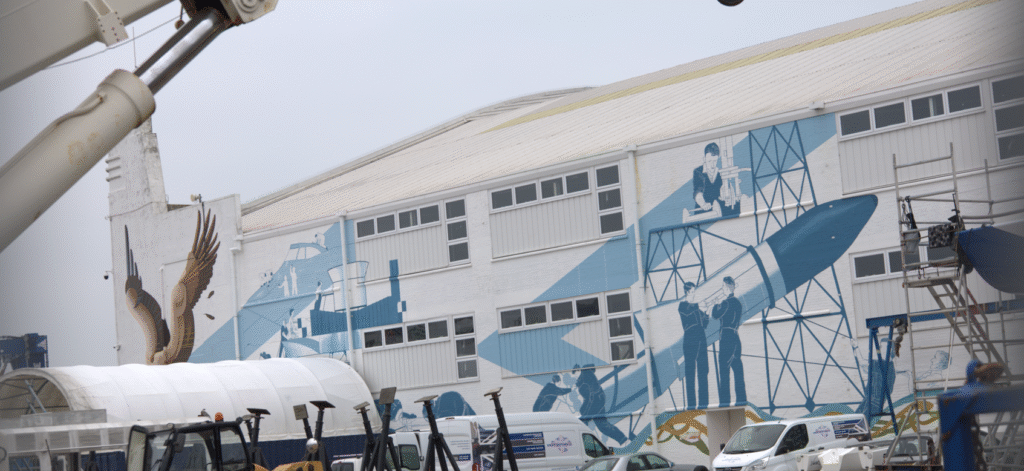
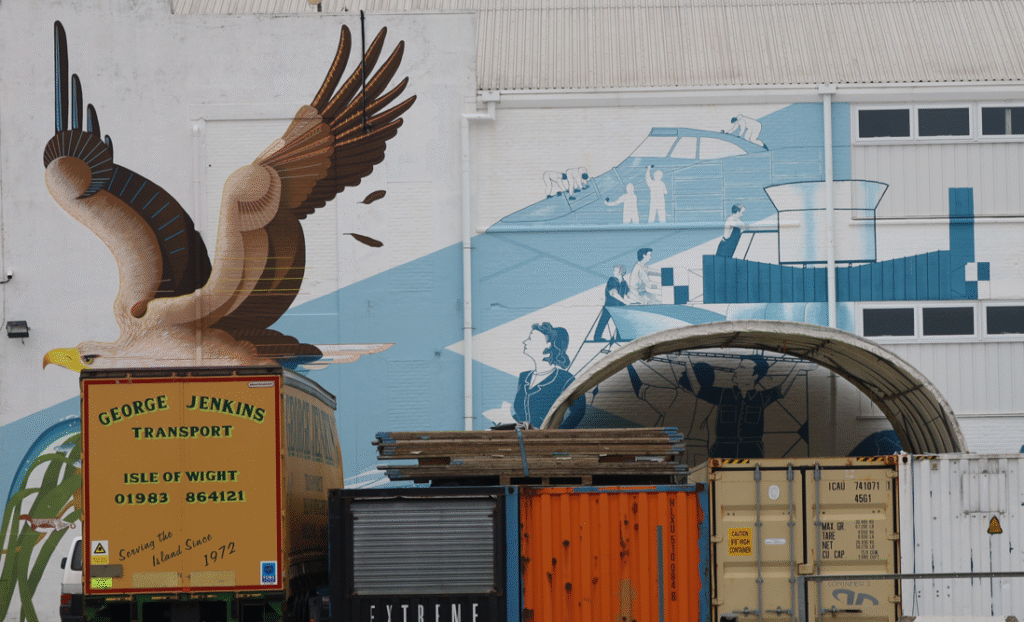
It seems a real shame, and something of an insult to the artist if I’m honest, that they’ve clearly spent a lot of time and money creating this artwork, only for it to be obscured by lorry trailers, shipping containers and parked vans.
I did wander round the outside of the building looking for a reception, or a gatehouse or anywhere I could perhaps ask about the current occupants of the building but I failed to find anyone to talk to. It was also starting to rain and I still had planning to do for the following day. So I caught a bus back to Newport, found a nice pub for dinner and set to planning my day trip to the New Battery at The Needles, and the test stands of High Down.

Pingback: Photo Report Isle of Wight March 2025 Part 2, The Needles New Battery - UK Space Launcher Forum